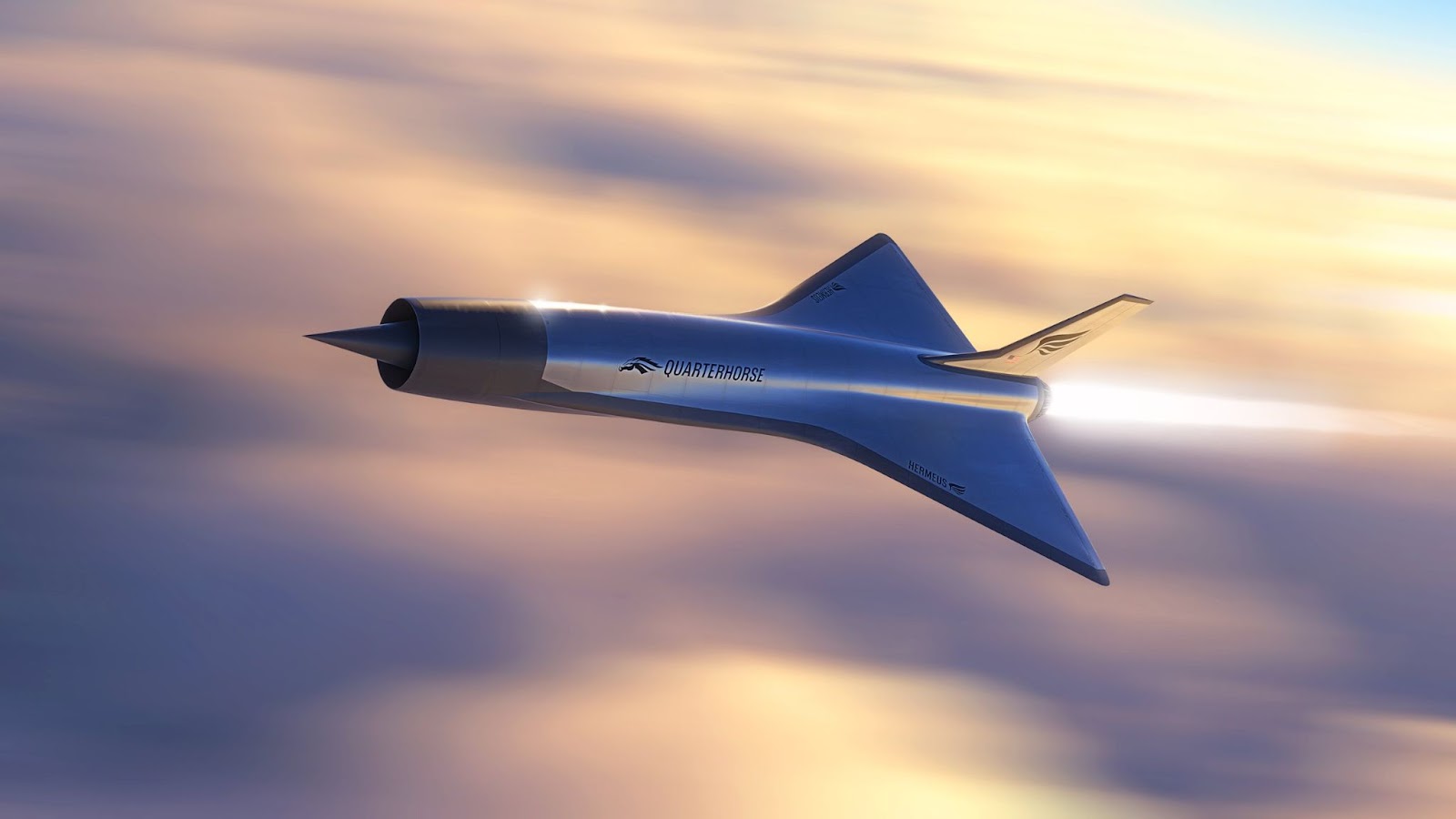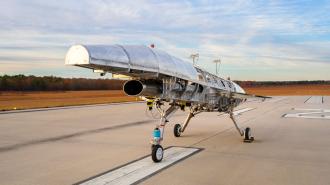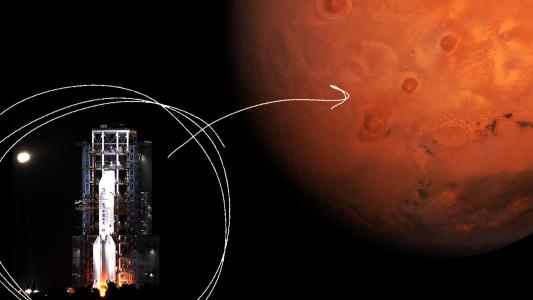Atlanta-based startup Hermeus just unveiled its first flight vehicle — putting it a step closer to developing a first-of-its-kind hypersonic aircraft.
The background: Hypersonic aircraft — ones that can fly at least Mach 5 (or 3,836 miles per hour) — have been around for decades, but they’ve all required rocket engines, and the only way to get them in the air is to drop them from an even bigger aircraft.
Hermeus is attempting to do something unprecedented: build not just one, but two hypersonic aircraft with jet engines that would allow them to take off from runways, like traditional planes, which would open up more applications.
One of those planes, Darkhorse, will be an uncrewed, reusable drone for the military. The other, Halcyon, will be a commercial passenger plane that could cut the standard 7-hour flight between New York and London down to just 90 minutes.
The Quarterhorses: Before Hermeus makes either of those hypersonic aircraft, though, it is creating four test vehicles — Quarterhorse Mk 0, Mk 1, Mk 2, and Mk 3 — with each building on the capabilities of the last.
In January, the startup finished testing Quarterhorse Mk 0, a non-flying prototype used to demonstrate remote command, controlled taxiing, and other ground-based capabilities.
Now, it has unveiled the first vehicle it actually plans to fly: Quarterhorse Mk 1.
Mk 1 is an uncrewed, remotely piloted plane, and the primary purpose of its testing phase will be to demonstrate high-speed takeoff and landing.
“As we begin the journey to first flight, we will conduct a comprehensive evaluation of the aircraft’s performance while simultaneously examining the effectiveness of our test procedures, safety culture, and interdisciplinary team collaboration,” said Don Kaderbek, Hermeus’ VP of test.
“Success is a possible outcome.”
AJ Piplica
In addition to unveiling Mk 1, Hermeus also revealed plans for Mk 2. That plane will be equipped with an F100 engine developed by aerospace manufacturer Pratt & Whitney and is expected to demonstrate supersonic flight in 2025.
“For just over 50 years the F100 has powered the F-15 and F-16 with industry-leading reliability, and now it enters a new era of aviation … Seeing a new aircraft flying the F100 supersonic next year will be nothing short of extraordinary,” said Josh Goodman, senior director of the F100 program at Pratt & Whitney.

Unprecedented flight: Once Hermeus wraps testing on the Quarterhorse Mk 2, it’ll be ready to move on to Mk 3, which it plans to use to break the all-time speed record for an air-breathing plane: 2193.2 mph, set by the Lockheed SR-71 Blackbird in 1976.
After that, Hermeus will build Darkhorse, which is expected to reach hypersonic speeds, followed by Halcyon, the plane that could let you travel around the world five times faster than any of today’s commercial aircraft. Hopefully.
“Success is a possible outcome,” AJ Piplica, Hermeus’ co-founder and CEO, told Freethink in 2022. “Is it the most likely outcome? No. You just keep moving, keep moving little bit by bit, until we will this into existence.”
We’d love to hear from you! If you have a comment about this article or if you have a tip for a future Freethink story, please email us at [email protected].





